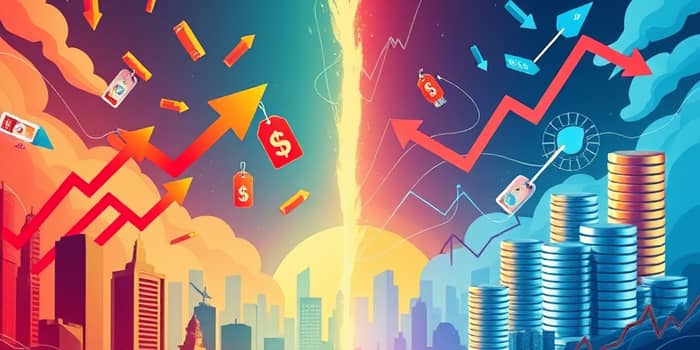
In an ever-changing global marketplace, price fluctuations can challenge households, businesses, and policymakers alike. Understanding the forces of inflation and deflation is essential for navigating economic uncertainty and making informed financial decisions.
Inflation is characterized by a rise in the general price level of goods and services over time, leading to a gradual erosion of purchasing power. Economists track inflation through indices such as the Consumer Price Index (CPI) and the Wholesale Price Index (WPI).
Deflation describes a decline in the general price level, resulting in increased purchasing power of money but often heralding economic contractions and credit contraction. It typically emerges when there is insufficient money in circulation or excessive supply relative to demand.
Accurate measurement is critical for policymakers and analysts. The Consumer Price Index (CPI) captures retail price movements faced by everyday consumers, while the Wholesale Price Index (WPI) reflects price trends at the wholesale level. In the United States, recent data shows a 3% increase in CPI-U over the 12 months ending January 2025, with an annual inflation rate of 2.4% as of October 2024.
Multiple factors can tip the scale toward rising or falling prices. Recognizing these drivers helps businesses adjust strategies and governments design effective interventions.
Price trends affect various aspects of economic life, from household budgets to corporate balance sheets.
During periods of inflation, individuals experience a loss of purchasing power over time, particularly those on fixed incomes. Central banks often respond by raising interest rates, which makes borrowing costlier and can cool off overheated economies. Asset markets react as well: home values and commodity prices typically rise, while investors may shift to inflation-protected securities. On the positive side, borrowers can benefit from paying debts with devalued currency, easing real payment burdens.
Conversely, deflation can trigger delayed consumer spending behavior, as shoppers postpone purchases expecting lower future prices. Businesses face shrinking revenues, leading to wage cuts or layoffs. Credit risks escalate as the real value of debt climbs, straining borrowers who borrowed under higher price expectations. Left unchecked, deflationary spirals can deepen recessions and prolong economic distress, as seen in Japan’s “Lost Decade.”
To temper inflation, central banks like the Federal Reserve may increase interest rates to reduce lending, tighten reserve requirements, and shrink balance sheets. Governments can pursue targeted fiscal restraint by cutting non-essential spending and avoiding overheating the economy.
In deflationary scenarios, authorities often reverse course: slashing interest rates toward zero, engaging in large-scale quantitative easing measures, and deploying fiscal stimulus packages to inject liquidity and reignite demand. Maintaining a moderate inflation target—commonly around 2%—helps prevent harmful deflationary expectations.
Disinflation refers to a slowdown in the inflation rate without prices actually falling below zero. Stagflation, on the other hand, combines high inflation with stagnant growth, presenting a particularly complex challenge for policymakers because traditional tools can exacerbate one problem while addressing another.
Different economic participants feel price shifts in distinct ways. Consumers face budgetary stress in inflationary times and delay purchases during deflation. Investors might see asset values appreciate with inflation but suffer in deflationary downturns. Homeowners with fixed-rate mortgages often gain from moderate inflation as their real mortgage burden declines, while creditors prefer deflation as their loans regain value.
Understanding the balance between inflation and deflation is crucial for economic stability. Sustained moderate inflation is often viewed as a sign of healthy growth, whereas persistent deflation can trigger recessions and deepen debt crises. Policymakers aim to thread this needle through calibrated monetary and fiscal measures, striving for stable prices that support robust, long-term prosperity.
References













